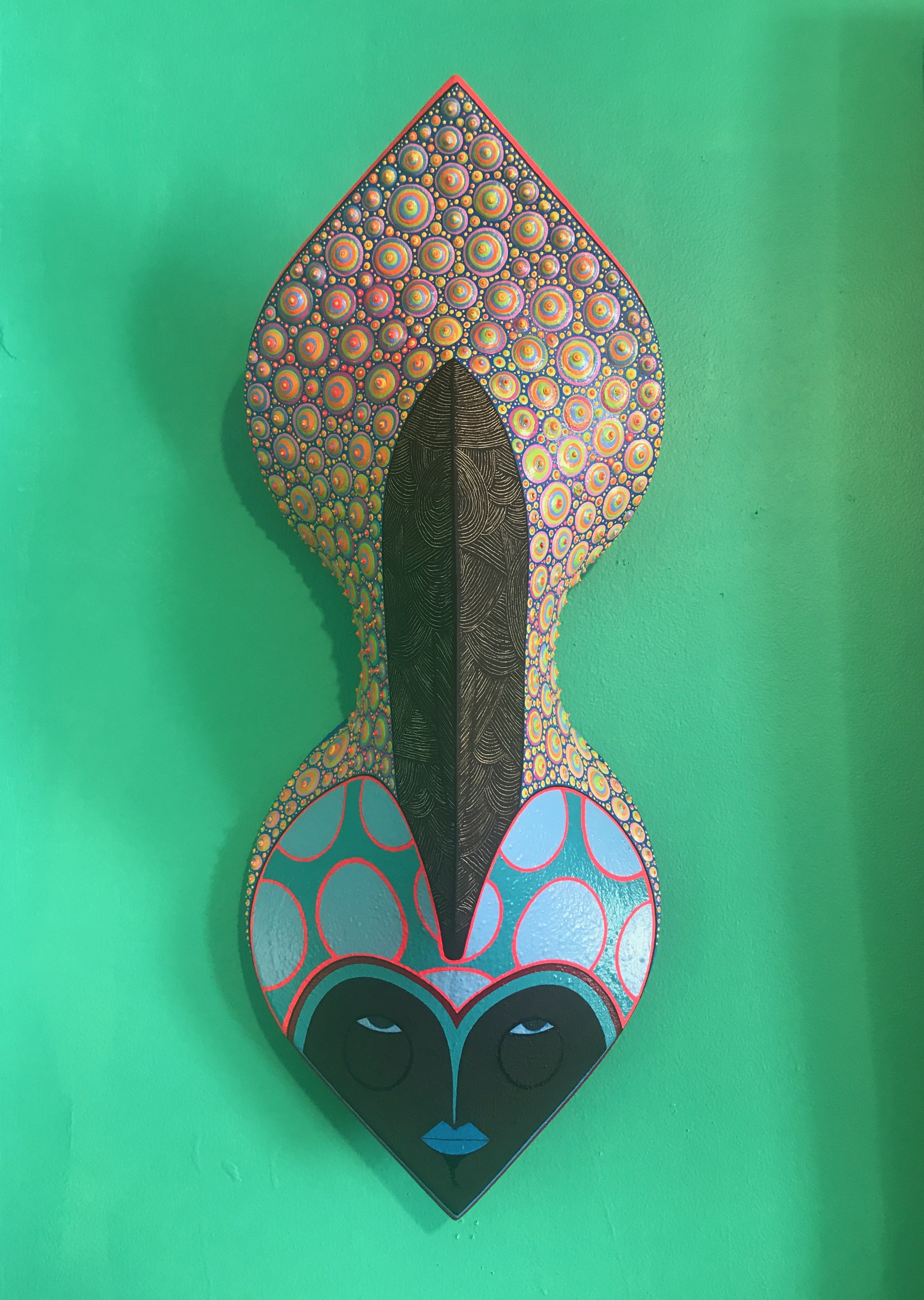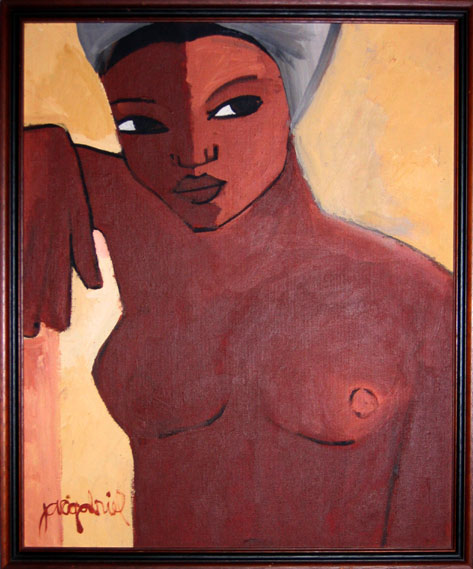by AGT EDITORS
November 10, 2018

Our Spring 2018 issue features the art of Claes Gabriel. Based in Philadelphia, Gabriel is a painter and sculpture bringing the particular motifs of Haiti into our world, renewing us in the process. We visited his studio this summer. Here is our report.
Color is an opening. The vibrancy evoked through the palette prepares us for a realization. We receive color’s invocation to be renewed. It is vigor. It is energy. It is life. And if we can maintain our gaze, we can make our way to a place where all of us are alive. An instantiation of the “worlds of color” so artfully imagined by W.E.B. Du Bois.[1]
Ancestors commune with our reality. Making intervention into our lives. Available to us through the aperture that color creates, letting light travel. We make them and they make us.
Claes Gabriel’s art is ancestral.
Born in Port-au-Prince, Haiti, Gabriel emigrated to the United States in 1989, a year after his father, the artist, Jacques Gabriel made his transition. In both son and father, we recognize the critical importance of remembrance. In the father, it is evoked through the life of ordinary Haitians—in the descendants of those who imagined freedom anew. In the son, the meaning of life is evoked through ancestral and spiritual energy. And a vibrancy. Together, the artists create a chromatic guide to Ayiti and to self, both past and present.
Gabriel’s work deploys the memory of everything that we are, remained and remaining, portrayed in the totemic, the symbolic. Abstractionism. Surrealism. A conduit for the spiritual (re)connection. These paintings and sculptures are in fact portals to that space.
It is profound that Gabriel chooses the mask for such a movement of our consciousness. It causes us to recall for instance, the art historian Robert Farris Thompson’s discussion of the Dan tradition of West Africa. In their world, the mask becomes critical to evocations of human perfectibility and equilibrium; routes to justice, to balance. Masks are also about possession—the idea that we can be filled with a spirit that would alter how we move and exist within the world. Thompson reminds us that those lessons of how to be, are dynamic, cool, and emanate from the eye, where “ritual energy is written.”[2]
“A person, when the spirit comes upon him, changes in personality, attitude, and stance. He moves in the image of the deity. If the god is strong and fiery, he becomes strong and fiery. This ultimate act of transcendence brings prestige. The servitor may make prophecies or miraculously heal while in the state of possession. The otherworldliness of this condition can be transferred to sculptural presentation.”[3]
The eyes of Gabriel’s masks are generative. They are available. They are open. Inviting us to ponder what it means to be possessed by cool. And by color. By a world of color. Openings made possible through color manifest in this work. Available to all who are willing to witness. Stop and ponder and look through the eyes of these masks. They invite the spirit.

Photo: Anyabwile Love
In order to bring us to this brink, Gabriel conjures his own style, one connected to the overarching tradition of Black cool.
We cannot segregate the artist from the thinker, the material from the ideal. And to create, we need more space. Gabriel’s studio is bare—except for the presence of spirit. He reminds us that “the less you have, the more you can create.”
On his process of creating the masks featured in our Spring 2018 issue, Gabriel spoke to the practice of shaping canvas into form. He contours what he calls, his “sculptural paintings” and shapes our imagination, generating a seamless experience of spiritual immersion. While listening to the sounds of Manno Charlemagne, he creates works that bridge together the deep ethereality of our past with the vexing realities of our present, but understands them in ecstatic connection. It is not merely a dialectic process, but a process of creative potential that allows the “ordinary” lover of art to remain open, willing to see the world in color. And maybe if we can see that world, and everything that it entails, then perhaps we can also see a world of equilibrium and perfectibility upon the same horizon.

